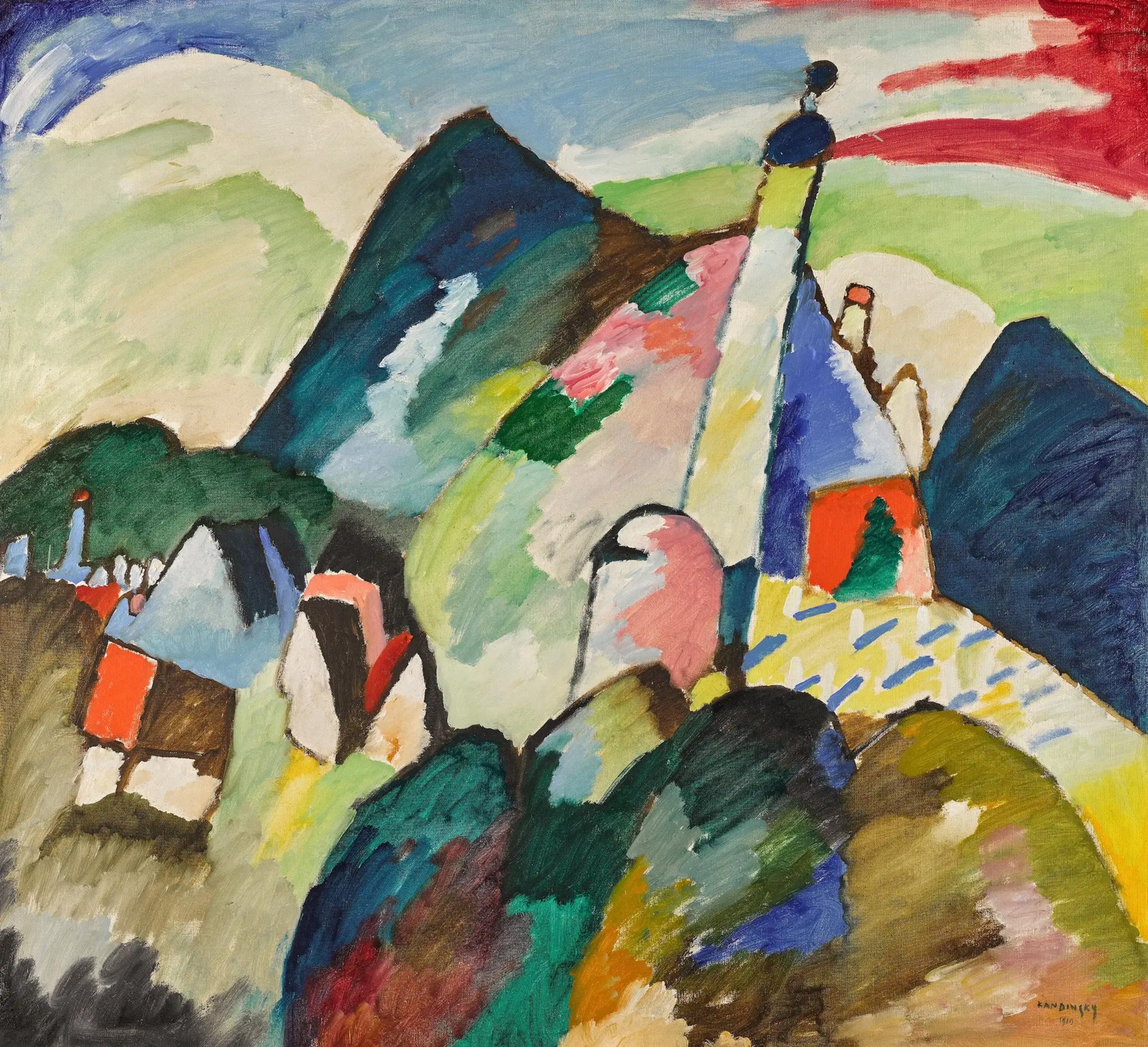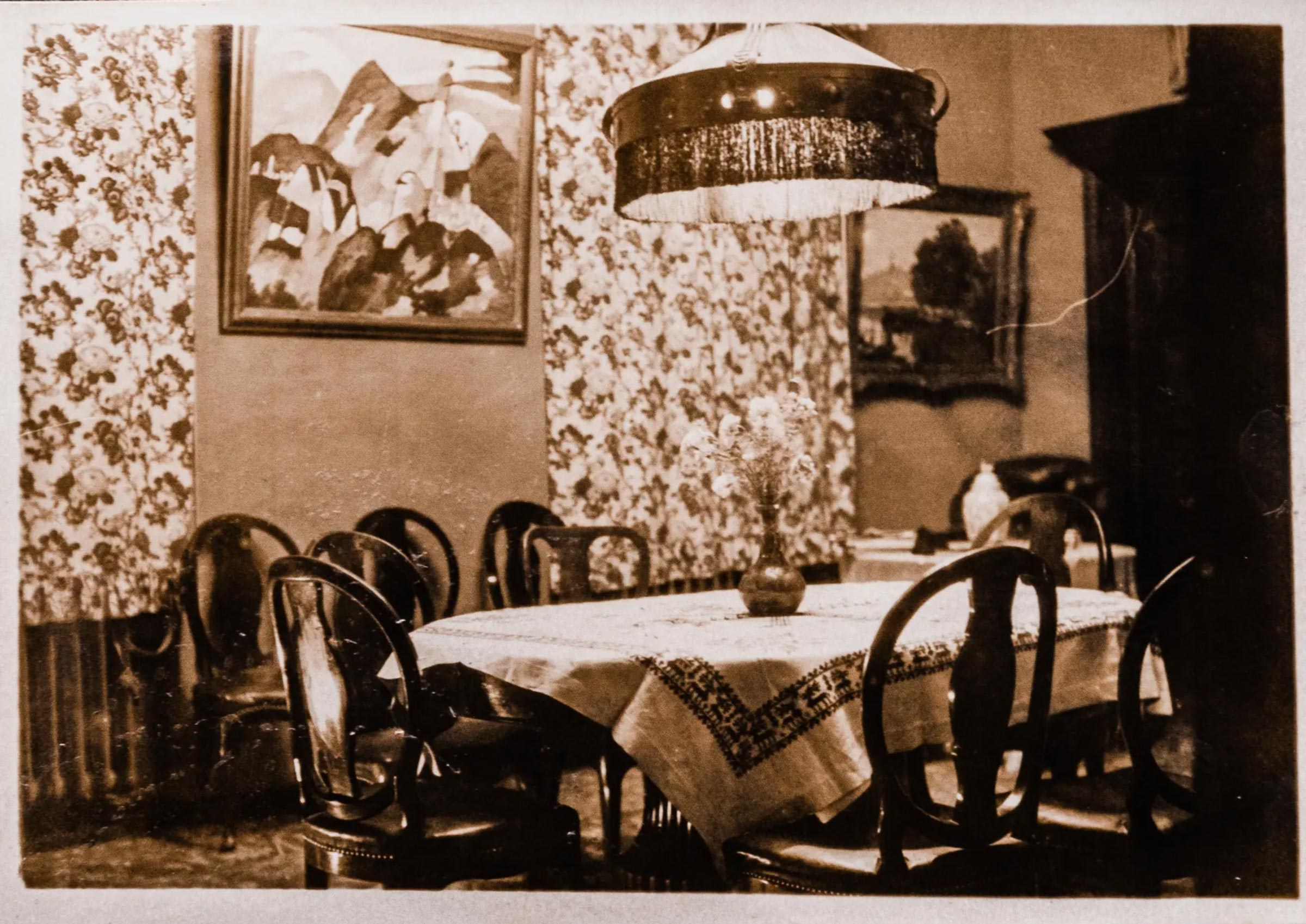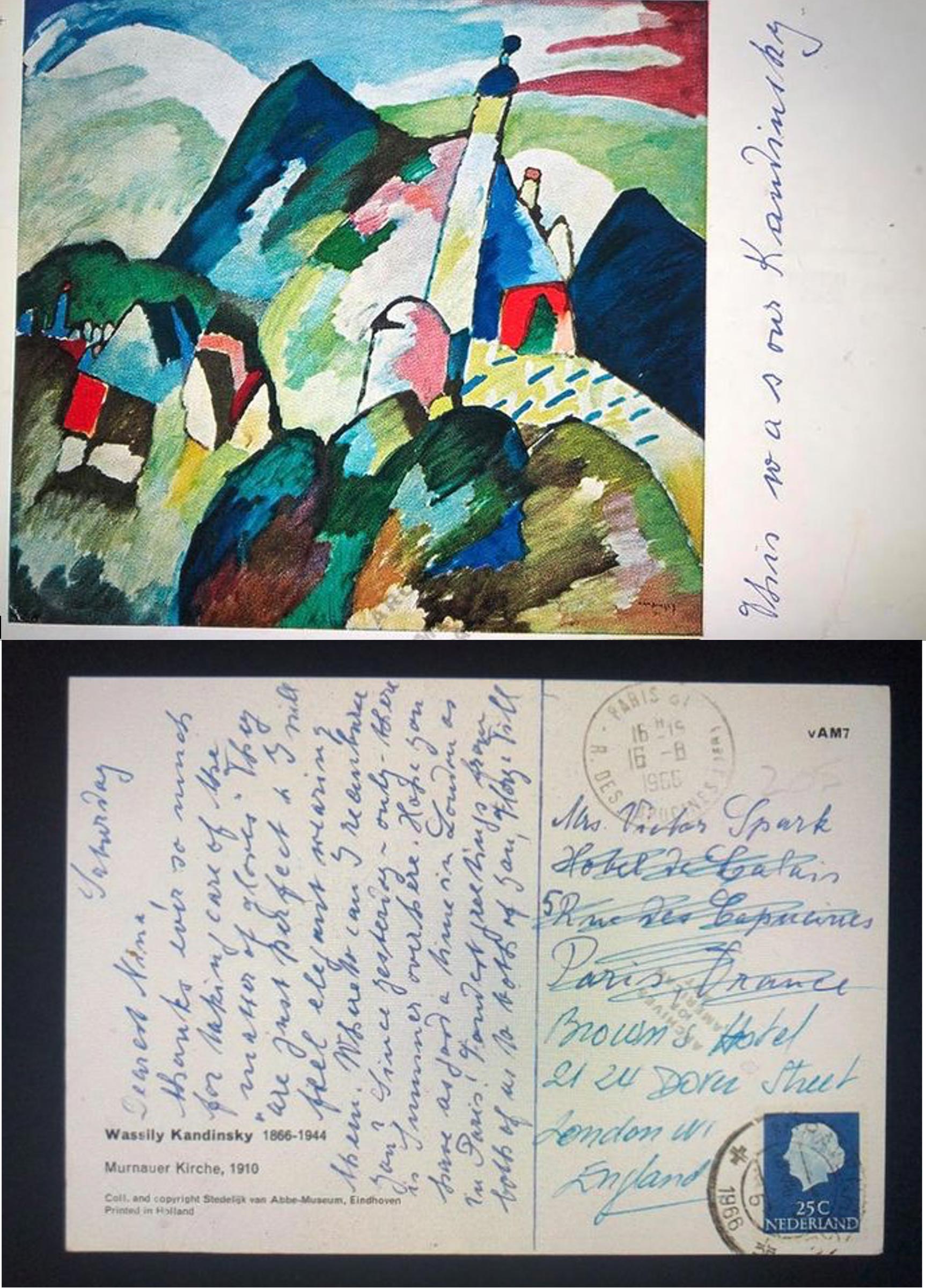
Wassily Kandinsky, Murnau mit Kirche II, 1910, Courtesy Sotheby’s
A standout Modernist masterpiece by Wassily Kandinsky, “Murnau mit Kirche II (Murnau with Church II)” from 1910, recently restituted to the heirs of German collectors Johanna Margarete and Seigbert Stern sold at Sotheby’s London last week (March 1) for a record £37,196,800/$44,766,880 including fees.
It hurdled the previous artist mark set by “Bild Mit Weissen Linien (Painting with White Lines)” from 1913 that made £33/$41.8 million at the same house in June 2017.
In terms of restituted art works, the 1910 color charged view of the Bavarian town in the foothills of the Alps with the vertical spire of St. George’s church dominating the foreground and where Kandinsky worked and lived, ranks number three, trailing Gustav Klimt’s “Portrait of Adele Block-Bauer II” from 1912 that sold to Ronald Lauder at Christie’s New York, a then record, $87.9 million in November 2006 and Kasimir Malevich’s ‘Suprematist Composition” from 1916 that made, a then record, $60 million at Sotheby’s New York in November 2008.
Siegbert Samuel Stern, then living in Berlin, acquired the breakthrough abstraction in 1924 and his widow, Johanna Margarete Stern-Lippmann inherited the painting in 1935.
At some point between December 1941 and April 1943, Myrtil Frank, a German Jewish businessman turned art dealer and active as a collaborator in identifying art owned by Jewish families in Holland during the Nazi occupation ‘acquired’ the work from Stern on behalf of the Mühlmann Agency which functioned as a clearing house for art appropriated in German occupied Holland.
(Johanna Margarete Stern-Lippmann was deported from Holland and murdered at Auschwitz on May 22, 1942, after unsuccessfully seeking an exit visa in Holland after fleeing her home country and trying to leverage her art collection as a vehicle for escape).
The painting, according to the Sotheby’s catalogue entry, subsequently went to Karl Alexander Legat in the Hague, another Mühlmann associated dealer linked to sales of paintings seized by the Nazis and then, in 1951 entered the permanent collection of the Van Abbemuseum in Eindhoven, Holland where it remained until its restitution to the heirs in 2022.
That victory for the family did not come easily since the Van Abbemuseum fiercely resisted its return and the initial review and investigation by the official Dutch Restitution Commission that began in 2016, rejected the family’s claim two years later, citing “insufficient facts around the period” where Stern lost possession of the work.
Undeterred or so it would seem, and armed with new evidence, the family filed a civil lawsuit against the Eindhoven City Council which led to a reissue of their claim with the Dutch Restitution Commission in 2019.
Remarkably, the family’s research undertaken by the Dutch based NIOD Institute for War, Holocaust and Genocide Studies unearthed a postcard written in 1966 by Meta Ehrlich, the wife of Myrtil Frank, with a reproduction of the painting on one side with the handwritten phrase “our Kandinsky.”
It was mailed to the wife of the prominent New York art dealer and appraiser of that era, Victor D. Spark (1898-1991) and landed in his huge trove of donated papers at the Smithsonian’s Archives of American Art.
The family also offered proof of the late Siegbert Stern’s will where he bequeathed the painting to his wife Joanna and its inclusion in a 1941 listing of her collection, a time when she was in exile in Holland and subject to persecution.

Kandinsky’s Murnau mit Kirche II in the dining room at Villa Stern, Courtesy Sotheby’s
The final piece of evidence was a black and white photograph of the family dining room with the stunning Kandinsky hung on the wall in their home in Potsdam Germany.
“This incredible, Modernist masterpiece,” said Lucian Simmons, vice-chairman and worldwide head of Sotheby’s Restitution Department as well as a senior specialist in the Impressionist and Modern Art department, “was where they had breakfast which is so mind-boggling, it becomes a witness to their family history.”
Drilling into the provenance of the painting wasn’t easy. “It had never been entirely clear,” added Simmons, “how the painting got from Johanna Margarete Stern to the van Abbemuseum in Eindhoven. It was suspected it had gone through Myrtil Frank but it wasn’t certain. It was the postcard that actually put Myrtil Frank firmly in the provenance and that started to make sense of how it came from Stern living in exile in Holland to the vanAbbemuseum.”
That evidence, according to Simmons, led the Dutch Restitution Commission to rule it was lost by the Stern family as a result of persecution and should be given back to them.

Postcard by Jewish art dealer Myrtil Frank depicting the painting Blick auf Murnau mit Kirche: ‘This was our Kandinsky’ © Archives of American Art
“Finding the postcard was serendipitous,” added Simmons, “but it shows how this kind of case can be cracked by seemingly random discoveries.”
Underscoring that find, heiress and family spokesperson Hester Bergen told the Eindhoven/Amsterdam online publication ED last June, “this is a breakthrough.”
When a restituted picture of this rarity and quality comes up Simmons says “I and my colleagues really try to recreate the milieu of where the artwork came from and to tell the story of the painting as well as all the art historical aspects of the works themselves. From our point of view, it’s something that’s very attractive to bidders because they like to know where the lots they’re pursuing are from and that context is actually more important in recent years—if you know that something was displaced in World War II, then it gives the artwork an imprimatur, a glow to the work of art, that they were in these great collections in the past and makes them more interesting over and above the fact that they’re great works. Really our job is to come up with a way of marketing their picture that is respectful to their background and also tell the story and maximize price. It’s quite a delicate operation but is incredibly satisfying for me and for our team.”
Selling restituted art works have become an important part of Sotheby’s and their arch-rival Christie’s business profile and Simmons says the figure for Sotheby’s cumulative sales in this still growing arena “is well north of one billion dollars.”
Asked why the auction houses are so laser focused on restitution involving works stolen or lost during World War II, Simmons said, “this is one of the few conflicts where privately owned collections were targeted and linked to genocide.”